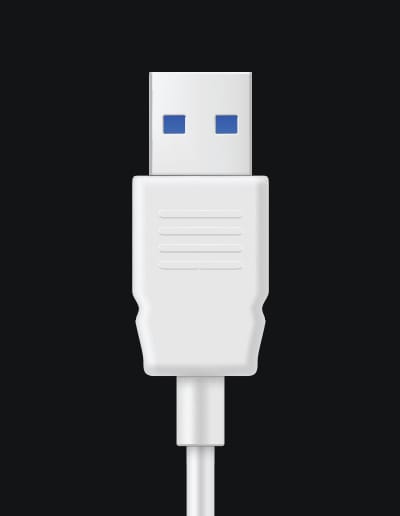What is USB A?

— or —

The USB Type-A interface was officially introduced in January 1996 by a consortium of companies including Intel, Compaq, Microsoft, and IBM. The aim was to standardize the disparate connectors and ports that existed at the time. USB 1.0, the first version of the standard, supported data transfer rates of 1.5 Mbps (Low-Speed) and 12 Mbps (Full-Speed). The USB Type-A connector was one of the first to be defined in this standard and has since become one of the most recognizable and widely used connectors.
Prior to the introduction of USB, connecting peripherals to computers was a cumbersome task that often required shutting down the computer to install new hardware. Users had to contend with a variety of ports, such as serial and parallel ports, each serving different functions and requiring different cables. The aim behind creating USB, and by extension USB Type-A, was to produce a universal connector that could simplify this process.
The USB Type-A connector was designed to be robust, easy to use, and compatible with a wide range of devices. Its “plug and play” functionality eliminated the need for users to manually configure settings or install drivers, making it incredibly user-friendly.
Over the years, USB Type-A has found applications in a myriad of use-cases:
Data Transfer: It has been widely used for transferring data between computers and other devices like external hard drives, flash drives, and printers.
Charging: Although not initially designed for charging, USB Type-A ports are often used to charge smartphones, tablets, and other rechargeable devices.
Connectivity: USB Type-A ports are commonly used to connect keyboards, mice, webcams, and other peripherals to computers.
Audio: Some headphones and microphones also come with USB Type-A connectors for easy plug-and-play usage.
Networking: Though not as common, USB Type-A has been used for connecting to networks via Ethernet adapters.
Yes, USB Type-A is still widely used today, although it is gradually being supplanted by newer, more versatile standards like USB Type-C. While many modern devices are moving towards Type-C for its higher data transfer speeds and smaller form factor, Type-A is far from obsolete. It remains backward-compatible with new versions of USB, ensuring its continued relevance.
Most contemporary computers still include at least one Type-A port, and it is still prevalent in many consumer electronics. Devices like flash drives, keyboards, and mice commonly feature USB Type-A connectors because of their widespread compatibility and user familiarity.
In summary, while USB Type-A may be facing competition from newer technologies, its impact and relevance cannot be understated. It revolutionized the way we connect devices and remains a fundamental part of today’s digital landscape.
Same day dispatch when you order before 2:00 pm.
We back our product with a massive 24 month warranty.
Got a question? Chat, email or talk to our super friendly support team.